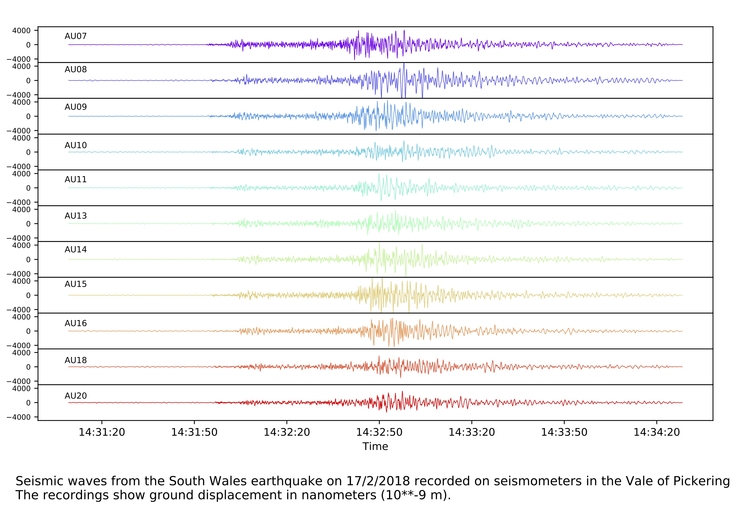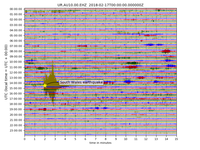The South Wales Earthquake of 17 February 2018
We have received a number of enquiries about the differences in the recordings of the South Wales earthquake at 14:31 on 17/02/2018 observed at different seismic monitoring stations in the Vale of Pickering network available here
Unfortunately, we were scaling the signals from AU10, AU13, AU14 and AU16 incorrectly prior to plotting, resulting in rather smaller signals on the plots for these stations than for the rest of the stations in the network. The signal from the earthquake was still visible but it was not as clear as it should have been. This problem has been fixed now, so that the plots of any future earthquakes and seismic events that are recorded on these stations will be scaled more uniformly.
It is important to stress that this scaling problem only affected the plots that are available on our web pages. We do not use these plots for detailed analysis of the data recorded by the Vale of Pickering seismic network, so it did not impair our ability to detect any seismic events or to determine reliable source parameters such as event magnitudes. Nonetheless, the plots are designed to show the public the data what we are recording, so it is important that they are an accurate representation and any events should be clearly visible. We are grateful to everyone who has brought this problem to our attention as it has allowed us to correct our displays before the start of any hydraulic fracturing operations.
Seismometers output a voltage that is proportional to ground motion, but different sensors often have different gains, which means that they will output a different voltage for the same ground motion. When we create the plots on the web pages, we apply a scaling factor, which, in theory should correct for the different gains of the different sensors that we use. In fact, we were applying the same scaling factor to all the sensors in the Vale of Pickering, despite the fact that AU10, AU13, AU14 and AU16 were different sensors to the rest of the network.
All our sensors and data loggers are calibrated to that we can determine true ground motions from the raw digital signals that we record. This is an essential part of observational seismology. These calibration data are provided by the manufacturer and should remain valid for the lifetime of the equipment.



